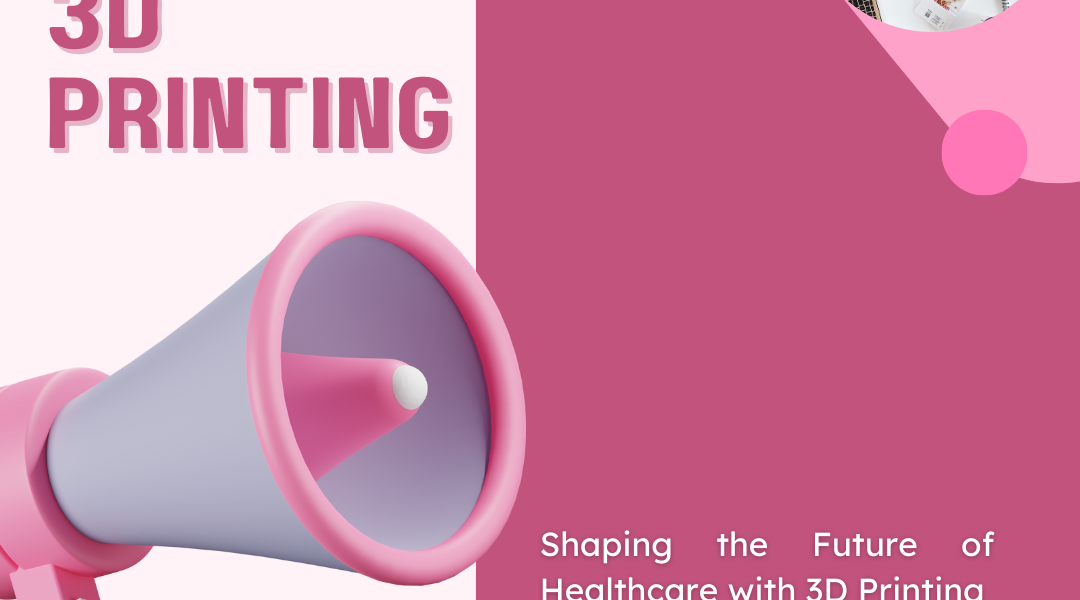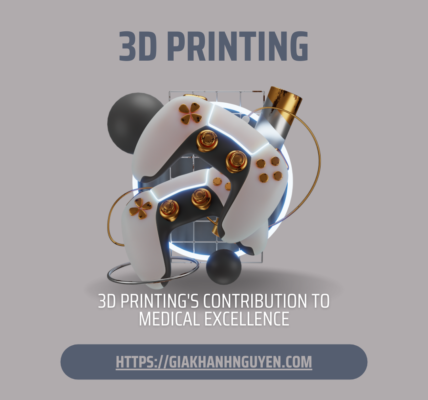Introduction: The convergence of healthcare and 3D printing technology is heralding a new era in the medical field, revolutionizing patient care, surgical procedures, and research. 3D printing, also known as additive manufacturing, is empowering healthcare providers to deliver more personalized and precise solutions than ever before. In this article, we will explore how 3D printing is shaping the future of healthcare and driving innovation across various medical domains.
- Personalized Medicine: One of the most remarkable contributions of 3D printing to healthcare is personalized medicine. Traditional approaches often rely on standardized treatments and medical devices, but 3D printing enables the creation of customized solutions. Whether it’s patient-specific implants, prosthetics, or orthodontic devices, 3D printing ensures that medical interventions are tailored to each individual’s unique anatomy, improving comfort and overall outcomes.
- Enhanced Surgical Precision: Surgical precision has reached new heights with 3D printing. Surgeons can now utilize accurate, patient-specific 3D models for meticulous planning and practice before performing complex procedures. This level of precision minimizes risks, reduces surgery time, and accelerates patient recovery. In addition, 3D-printed surgical instruments can be customized for specific surgeries, further enhancing precision.
- Medical Education and Training: Medical education has been transformed through the integration of 3D printing. Educational institutions can create realistic anatomical models that replicate human organs and structures with astonishing accuracy. Medical students and professionals can gain practical experience, refine their skills, and stay updated with the latest medical advancements using these models, contributing to higher standards of patient care.
- Accelerated Research and Development: 3D printing accelerates research and development within the healthcare sector. Researchers can swiftly prototype and test new medical devices, pharmaceuticals, and treatment methods. This agility is especially vital in addressing emerging health challenges and pandemics, where timely innovation can save lives and provide effective solutions.
- Dental Precision: Dentistry has experienced a significant transformation due to 3D printing technology. Dentists can now create highly accurate dental implants, crowns, bridges, and orthodontic appliances customized to each patient’s oral anatomy. This precision improves dental outcomes, enhances patient comfort, and streamlines treatment processes.
- Biofabrication and Organ Printing: The future of 3D printing in healthcare holds the promise of biofabrication and organ printing. Researchers are actively exploring methods to 3D print functional human tissues and organs. Although this field is still evolving, it offers hope for addressing organ shortages and transforming transplant procedures, potentially saving countless lives.
- Cost-Efficient Solutions: 3D printing has the potential to reduce healthcare costs by minimizing the need for costly revisions and replacements. Customized medical solutions often prove more cost-effective in the long run. Moreover, 3D printing’s adaptability and accessibility make it a valuable tool for delivering medical solutions to remote and underserved areas, bridging healthcare disparities.
- Telemedicine Integration: The integration of 3D printing with telemedicine has opened up new horizons in healthcare delivery. Telemedicine has gained prominence as a means of providing remote medical consultations and services, especially in underserved or distant areas. The synergy between telemedicine and 3D printing allows healthcare professionals to remotely assess patients, share digital designs, and create customized medical solutions, bridging the geographical gap and ensuring that patients receive high-quality care regardless of their location.
- Ethical and Regulatory Considerations: As 3D printing technology advances in healthcare, addressing ethical and regulatory considerations remains a priority. Ensuring the safety, quality, and ethical use of 3D-printed medical products is essential for maintaining the trust and confidence of patients and healthcare providers. Regulatory bodies and healthcare institutions must continuously adapt and refine their standards to keep pace with the rapid evolution of this technology.
- Expanding Possibilities: The future of 3D printing in medicine is ripe with possibilities. Researchers are exploring groundbreaking applications, including the printing of intricate vascular networks within tissues and the development of biocompatible materials for advanced medical solutions. These innovations offer hope for tackling some of the most complex medical conditions and unlocking new avenues for treatment and care.

